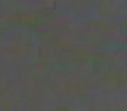About Noise and Noise Reduction
Image noise looks like random black, white, or colored pixels in an area of a photo where there should be solid color, such as a dark night sky. In digital photography, noise is typically more visible in the dark areas of a photo.
There are many causes of image noise. You will increase image noise if you use a high ISO setting (such as ISO 800) to capture a photo, or if you extend the exposure time. (You would typically use a high ISO setting and extend exposure time to take a photo in low light.) However, image noise can be caused by dead or stuck pixels in a digital camera's image sensor. Similarly, dust on a camera lens or scanner bed can cause noise by blocking or reflecting light.
Images generally have two types of noise: luminance and color. Luminance noise is random variations of brightness, and particularly in gray areas, may appear spotted when there should be a solid color in the area of the image.

Color noise is random variations of color in the image.

Noise is visually distracting, so in most cases you will want to reduce noise in your photos. However, if you reduce noise too much you may unintentionally reduce image sharpness.You can use the Noise Removal tool to remove both luminance and color noise in your images.
Loading Images in ACDSee Ultimate with Noise Reduction from Legacy Versions
If ACDSee 15.0 loads an acdc file made with a previous version, the denoise adjustment layer is added using the legacy settings and runs the legacy algorithm. Loading does not change the image. The ACDSee 15.0 GUI is loaded, but only the legacy sliders are enabled (Luminance and Color) and the new sliders disabled. If a legacy slider is moved, the new algorithm is engaged and the new sliders enabled. The image can then be re-adjusted for better results using the additional ACDSee sliders.
ACDSee 15.0 acdc files that include denoise adjustment layers will not load in older versions of ACDSee.